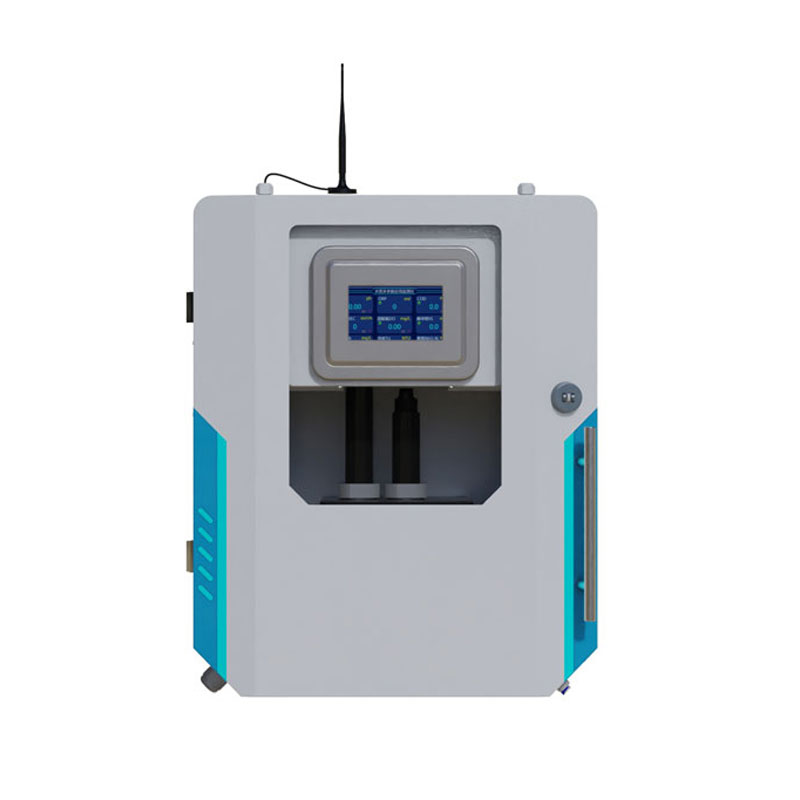Shandong Fengtu IOT Technology Co., Ltd
Sales Manager:Ms. Emily Wang
Cel,Whatsapp,Wechat:+86 15898932201
Email:info@fengtutec.com
Add:No. 155 Optoelectronic Industry Accelerator, Gaoxin District, Weifang, Shandong, China

Sales Manager:Ms. Emily Wang
Cel,Whatsapp,Wechat:+86 15898932201
Email:info@fengtutec.com
Add:No. 155 Optoelectronic Industry Accelerator, Gaoxin District, Weifang, Shandong, China

Model:FT-GSZ05
Brand:fengtu
1、Water quality monitor system for drink water Product Introduction
Water quality monitor system for drink water water quality monitoring system is a comprehensive sensor data collection, display, and historical curve monitoring system based on IoT technology.It consists of a flow stabilization and exhaust unit, an analysis and monitoring sensor unit, a system control unit, and a remote communication unit.It features comprehensive power supply, network communication, and real-time cloud-based data observation and analysis.
2、Water quality monitor system for drink water Applications
This device is designed for online water quality monitoring at water supply terminals with a pressure below 0.3 MPa.It can be widely used in urban and rural waterworks, water distribution networks, secondary water supply systems, user terminals, indoor swimming pools, large-scale water purification facilities, and direct drinking water.It is an essential online analyzer for water plant production process control, water conservancy, water management, and health supervision.
3、Water quality monitor system for drink water Functions and Features
1.4G GPRS networking.
2.Supports RJ45 network expansion.
3.Supports remote sensor transmission.
4.4.3-inch touchscreen display.
5.Supports 8GB of data storage and TF card data export.
6.Supports one RS485 Modbus-RTU slave.
7.Supports multiple RS485 Modbus-RTU sensor expansions.
8.Supports IoT data display, storage, and analysis platform.
9.The platform supports data forwarding through multiple protocols, including TCP short links and HTTP.
4、Water quality monitor system for drink water System Components
The water quality monitoring microsystem consists of a power supply unit, a sensor data monitoring unit, a display unit, a flow cell unit, a remote communication unit, and an integrated box main unit.
1.Power Supply Unit
Power Adapter: AC220 to DC12V/2A.
2.Analysis and Testing Unit
The analysis and testing unit is mainly composed of residual chlorine, pH, water temperature, turbidity, and conductivity sensors, which are fixed to the flow cell through threads or tight fitting fixtures.The main parameters of the sensors are as follows
| Serial number | Sensor type | Measurement range | Measurement principle | Measurement accuracy |
| 1 | Residual chlorine | 0~5.00mg/L | Electrode method | Reading ±5%; ±0.3℃ |
| 2 | pH | 0~14 (ph) | Electrochemistry (salt bridge) | ±0.1PH |
| 3 | Water temperature | 0~50℃ | High-precision digital sensor | ±0.3℃ |
| 4 | Turbidity | 0~40NTU (optional) | Scattering light method | ±1% |
| 5 | Electrical conductivity | 0~5000uS/cm | Contact method of electrode | ±1.5% |
Note: The sensor should not be installed upside down or horizontally.It should be installed at a minimum angle of 15 degrees.
The operating environment of the above water quality sensors is 0-50°C and <0.3 MPa.
The sensor can be configured to meet specific monitoring requirements.The above sensor parameters are only for reference.Please read the sensor manual for details.
As an emerging instrument in the field of meteorological observation, the Portable Weather Station is gradually changing the way meteorological data is collected. It is small in size and light in weight, with extremely strong mobility, making it effortless to carry and transport. Whether it is for c...
Traditional fixed visibility monitoring equipment is limited by factors such as installation location and power supply conditions, making it difficult to meet flexible and variable monitoring needs. The emergence of the Portable Visibility Detector has effectively solved this problem.Low visibility...
In Wales, rain seems to be a frequent visitor. The UK has an average of 159 rainy days per year, while Wales has as many as 173 days. So far in 2024, there have been even more rainy days than sunny days. The never-ending rain often makes people feel gloomy. But do you know that going for a walk on a...
Meteorological monitoring is closely intertwined with our daily lives. From daily commuting to agricultural production, from industrial operations to urban planning, meteorological information plays a pivotal role. Precise meteorological monitoring enables early warnings of severe weather events suc...